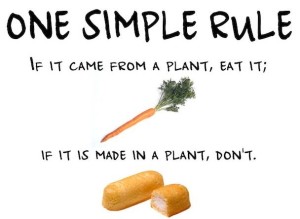If you are new to ‘making better choices for a healthier lifestyle’ you may not know much about the ‘Whole 30’ food plan approach. So a little background….This diet was developed by a couple who believe that eliminating certain foods from your diet will help you in: restoring a healthy metabolism, reducing systemic inflammation, healing your digestive tract and balancing your immune system. Unfortunately, benefits of this approach our anecdotal meaning, there is no scientific evidence or studies that have been done to prove out these claims. Strike one in my book.
I understood that the Whole30 was a whole foods approach. But the challenge is not just to eliminate processed and packaged foods from your life for 30 days. You are also instructed to avoid beans and legumes, dairy products, sugar (including natural sweeteners like honey and maple syrup), alcohol, all grains, and starchy vegetables like potatoes. Additionally, it’s not just about cutting down or reducing these foods but about completely eliminating them from your diet. Strike two. I personally just don’t believe that you have to be this restrictive to have a healthy diet that will support healthy goals for a healthy lifestyle.
But let me hold up on my opinion and you can form your own opinion as we unpack The Whole 30.
The first thing you can say about this approach is that it’s disruptive. In other words it kind of follows the

There are so many diets/food plans out there-Just pick one that fits you-and follows this simple rule!
idea that most people think you have to ‘trick’ your body sometimes to get it to respond the way you’d like it to. Often times people think that you have to change up your workout routine to trick your body and get better results. The Whole 30 thinking is similar, trick your body by disrupting your normal food plan by eliminating certain foods. I don’t really see it this way. I don’t believe in tricking your body whether it’s in physical activity, or with your food. I actually think we should call it what it is, and that is trading one habit for another. Which is good, as long as you’re trading a good habit for a bad habit. So the disruption is, I acknowledge that I have a bad habit and need to replace it with a good habit. Simple, yet much harder to do than to say! Besides, I think you can have a healthy relationship with food without eliminating entire food groups from your choices. (Oops, there I go again!)
The second thing to note about the Whole 30 plan is that it takes a lot of planning and preparation to work around the food groups you are eliminating and find substitutes, so that you still get good, quality nutrition from the foods you ARE eating. It can be a challenge to develop a food plan that incorporates all the nutrition your body needs for your particular level of activity and fitness. It’s doubly difficult if you’re also trying to work around long lists of foods you have to avoid.
Finally, for today I will lead you with a fact: The Whole 30 was ranked near the bottom, 30th out of 38, in the US News and World Reports annual diet ranking.
Stay tuned for more thoughts on this current fad and some helpful suggestions for an alternative approach!
For now, thanks for reading!
Be well- Your BFF

Recent Comments